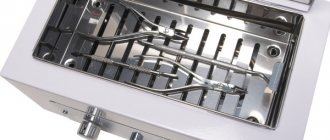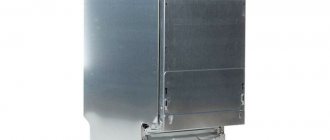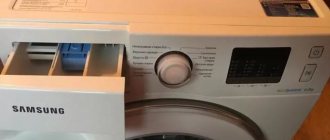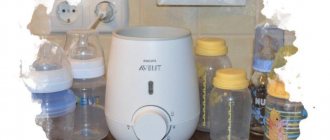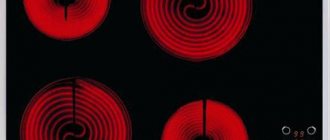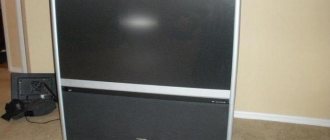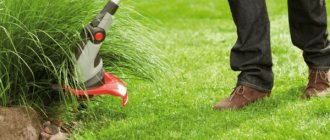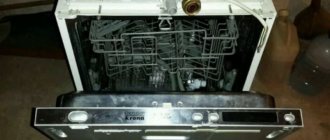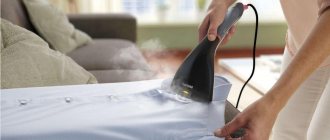- July 17, 2018
- Nail care
- Ksenia Stepanishcheva
Many germs accumulate on manicure devices, so they need to be sterilized. The procedure eliminates bacteria, spores, hepatitis viruses, and HIV. Glasperlene sterilizer for manicure tools is great for professionals who perform manicures at home or in small salons. The rules for operating the device are described in the article.
Why is sterilization required?
Manicure tools come into contact with the skin, so their treatment is considered mandatory. If this procedure is not performed in a salon or by a professional at home, then you should not perform a manicure there.
Sterilization is necessary to protect against viral and bacterial infections and fungi. An improperly processed device can lead to infection with hepatitis C or AIDS. Because of this, you will need to spend a lot of money and effort on treating the disease. When performing a manicure yourself, you also need to perform this treatment.
What tools need to be processed?
Masters have a set of devices that are used to process nails before applying a decorative coating. Disinfection is needed for instruments that come into contact with skin and nails. This applies to:
- nail scissors;
- wire cutter;
- pusher;
- nail brushes;
- baffy, files;
- manicure table, roller and bath;
- LED or UV lamps for design;
- reusable forms for nail extensions.
It is also necessary to treat the room where the procedure is performed. The hands of the master and the client must be clean. Only in sterile conditions will a manicure be safe.
Device
The operation and design of most glasperlene sterilizers for manicure instruments are very similar. All devices are presented in the form of a plastic or metal box with a lid. Under the outer casing there is a glass made of heat-resistant material filled with glasperlen balls.
Near the heat-resistant container there is a heating spiral element, from which the set temperature is transferred to the glass filler. The hot balls come into contact with the surface of the instruments and perform sterilization. The device heats the balls up to 250 degrees. According to reviews, this device is one of the most popular among manicurists.
What to choose: Glasperlene sterilizer or dry heat?
The choice of tools and materials for work is an item that should be approached with special care and responsibility. After all, not only the quality of providing a particular service, but also the health of your client directly depends on this. Remember that there is a big difference between disinfection and sterilization. The first is a set of measures aimed at destroying pathogens of infectious diseases and destroying toxins in environmental objects. But this process is superficial and partial, so many microorganisms still live on the working edges. Sterilization is the release of an object or material from all types of microorganisms, including bacteria and their spores, fungi, viruses and virions.
Among glasperlene sterilizers, brands such as tango, Irisk, runeil, Jessnail and others are especially popular. Are you thinking about purchasing such a practical device? Then you need to clearly understand what you need - a dry heater or a ball sterilizer. The glassparlene autoclave is miniature and compact, it does not take up much space on the table and can be easily transported, while the dry-heat oven is very massive and heavy, it is very difficult to move it, and for permanent installation of the device you will need a separate shelf or cosmetic table. A glasperlene device quickly heats up to the required temperature and carries out the process of cleaning the instrument in a matter of time, while a dry heater works for many hours and additionally absorbs a large amount of electricity. True, the latter also has its undeniable advantages, because, unlike its ball-type counterpart, it processes the entire surface of the instrument, including handles and holders, but glasperlen cannot boast of this. As you can see, each device has its own nuances and operating features, but still, the classic ball sterilizer is now the most modern cleaning method, serving faithfully for many generations of craftsmen.
Carefully monitor the hygiene and cleanliness of your workspace, because they sometimes more clearly characterize the degree of your skill than the variability or non-triviality of fashionable designs.
Advantages
A ball sterilizer has the following advantages:
- The instruments are immersed in the sterilization medium within a few seconds. The short processing time is due to the high temperature created by glasperlene.
- Thanks to its small dimensions, the device can be easily transported.
- Operating the device is not difficult.
- Processing of instruments will be more gentle compared to chemical and steam. The devices last longer and need to be sharpened less often.
- After processing, you can use the necessary tools. Cooling lasts 30-60 seconds.
- The duration of cooling of the balls in the switched off closed sterilizer is 60 minutes. This is necessary to warm up the device for processing in a short period.
- The duration of operation is up to a year.
According to reviews, the Glasperlene sterilizer is easy to use. If you follow the operating rules, the device will be an excellent assistant for a long time.
Let's sum it up
Glasperlene (ball) sterilizer today is one of the best assistants in the field of cosmetology and dentistry, as it has two important advantages over other types of such devices - small dimensions and high speed of the processing process. It is up to the user to decide which model of device is best to choose, but first of all, one should decide on its scope of application, volume of operation and price. It is also equally important before purchasing to study several suitable sterilizers at once, compare their characteristics and read reviews. Generalized information on these criteria formed the basis for the rating of the best glasperlene sterilizers for 2021 compiled in this article.
Flaws
But glasperlene sterilizers for manicure instruments also have disadvantages:
- Only the working part of the device is placed in the glasperlene medium. The handle located above the layer of balls is not sterilized.
- Due to the small capacity of the device, the dimensions of the processed tools are limited: the device can be used for small objects.
- Due to the high temperature, only metal instruments can be sterilized in the device: wire cutters, scissors, tweezers, pushers. The remaining materials melt.
Device efficiency
Glasperlene sterilizer for manicure instruments is much more effective than standard treatment with alcohol solutions, which was so relevant before. It has been scientifically proven that such maneuvers have no value or importance, because alcohol kills only the most primitive microorganisms. If you enter “ball sterilizer efficiency” into the all-knowing Google, the answer to your query will be a million links confirming the functionality of such a highly technical device. Here are just a few undeniable arguments from ProstoNail specialists:
- the deep sterilization method includes a fundamental effect not only on the working edges, but also on the entire surface of the instrument, and this happens within 15-20 seconds;
- under the influence of high temperature, bacteria and carriers of various diseases are destroyed. Therefore, glasperlene sterilizer kills hepatitis;
- destroys gram-positive and gram-negative bacteria;
- effective against hepatitis B virus, herpes, HIV;
- has a powerful antifungal and antituberculosis effect, eliminating pathogenic bacteria.
Terms of use
The instructions for the Glasperlene sterilizer are simple. Placed devices must be treated with a disinfectant solution or manicure disinfectant. The tools must be dried: moisture will make the balls and metal container unusable.
How to properly sterilize manicure instruments? This procedure is simple, you just need to follow some rules. Sterilization of hairdressing equipment and manicure instruments is performed as follows:
- You should find in the instructions how long it takes to sterilize the necessary instruments.
- The device plug is inserted into the socket.
- The lid must be closed.
- Then the power button is pressed.
- You should wait for the warm-up time indicated in the instructions. Usually it is 12-15 minutes. When the desired temperature is reached, the light goes off. The presence of a glowing green LED indicates that the temperature is insufficient and warming up is in progress.
- You need to open the cover of the device.
- Manicure devices must be placed in glasperlen balls so that they do not touch the bottom and walls of the metal container. Nippers and scissors should be placed open to contact the cutting surfaces of the tools.
- Accessories must be in the sterilizer for the time specified in the instructions.
- After this, you should immediately use the manicure devices: they should not be stored, since only the working end will be sterile.
The ball sterilizer is stored away from heat sources. Compliance with operating rules allows for high-quality processing of devices.
Instructions for working with glasperlene sterilizers
- First of all, you should prepare your tools. They need to be cleaned in a disinfectant solution according to the instructions on the package and dried well. If this is not done, they may deteriorate while in the sterilizer.
- The next step is to open the lid of the device and fill the flask with quartz balls to 80% (no more). After this, turn on the device and wait until it warms up. Different models, depending on the size, materials from which it is made, and price, have different heating times. On average it is 20–30 minutes.
- After the device has heated to 240 °C (this is the minimum temperature at which all dangerous viruses and microorganisms die), it can be sterilized. To do this, place them in the center of the flask with the sharp tips down. It is not recommended to process a large number of manicure tools at the same time, as you risk dulling them and scratching the sterilizer flask.
- After 20–40 seconds, the metal devices can be removed and cooled. It is recommended to do this immediately before work so that both you and your client can be sure that the tools are clean.
This is interesting! Which hair clipper is better according to reviews?
Do not forget about the safety rules: sterilize manicure devices only with the lid closed to avoid burns; for the same purpose, do not forget to wear gloves when removing tools from a hot sterilizer. It is recommended to keep one batch of instruments in the sterilizer for no more than 40 seconds.
Replacing balls
Before using Glasperlene sterilizer for manicure instruments, the suitability of the Glasperlene medium must be checked. If the balls change color or become cloudy, they are replaced with new ones. Old material cannot accumulate and release heat and does not disinfect.
It is important that the sterilization medium fills the metal cup 2/3 full. The device requires 1-1.5 packs of Glasperlene. How often do balls need to be replaced? This should be done at the following frequency:
- When signs of unsuitability are detected.
- Monthly when the device is used for a long time.
- If the load is average, then every six months.
- The balls can be used for no more than a year.
To extend the service life of the sterilization medium, every 1-3 months the balls should be washed with a 5% solution of baking soda and then with running water. The balls are placed in a sterilizer after complete drying. When used correctly, the device for processing hairdressing equipment and manicure devices will work smoothly.
Price
The price of a glasperlene sterilizer varies from 1000 to 8000 rubles. It all depends on the make and brand of the device. When choosing, you should focus on the scale of provision of manicure services.
The cost of glass filler starts from 200 rubles per 500 grams. The price of heat-resistant balls depends on the manufacturer and can reach up to 1000 rubles.
It is best to purchase a sterilizer and filler in specialized stores in order to avoid low-quality products.
Best models
Various sterilizers are produced, so it is not so easy to make a choice. To make this easier, you should familiarize yourself with the best devices:
- Ultratech SD-780. The device is made in Russia. The outer panel is made of metal, and the inner bulb is made of ceramic. Ceramics serve for a long time, do not deteriorate from corrosion, and also protect against sticking of the glasperlen filler to the walls and bottom of the container. The temperature of the Glasperlene sterilizer heats up to 250 degrees in 15 minutes. The device cools down to a safe temperature in 20 minutes. It automatically maintains operating temperature. Sterilization is carried out in 15-20 seconds.
- Thermoest. The device has 2 modifications. The operating temperature is 190-290 degrees. The devices differ in power (up to 220 and up to 320 W), readiness time (25 and 30 minutes), and filler weight (170 and 270 g). The duration of disinfection is 20 seconds.
- Tau-quartz-500. An Italian device used in nail salons. The maximum operating temperature is 230 degrees. Large size of the metal flask located inside: height 5 cm, diameter 6.2 cm. Processing time - 10-15 seconds.
- Tool sterilizer. The budget device is suitable for home use. The temperature is 250 degrees. Warming up occurs after 12 minutes, and the processing time is 30 seconds.
Other varieties
There are other types of sterilizers that have their own characteristics. A UV sterilizer is in demand. According to experts, this cleaning method does not get rid of all microorganisms, so safety is not at a high level. It has been clearly established that hepatitis and HIV viruses are resistant to ultraviolet radiation. It is advisable to use this drive for storing sterilized and dried devices.
There is an ultrasonic device that is considered universal and safe. To use it, you need a special solution, which flows around the device during vibration, filling the cavity. Microbubbles collect and burst, which “remove” pathogenic microorganisms and rust from the surface. An ultrasonic device is used for small and large parts. The only downside is the high cost.
Another type of sterilizer is a dry-heat oven, operating at a temperature of 200-260 degrees. The downside is the processing time - 1-2 hours, increased price. Even basic models cost from 11 thousand rubles. This pays off in the salon, but it doesn't always pay off at home.
Instead of a dry-heat oven, an autoclave for manicure devices can be used. The device is presented in the form of a chamber in which high pressure is provided with temperatures up to 134 degrees. Such installations are used not only in cosmetology, they have long been used in medicine. An autoclave can sterilize devices in 15-20 minutes, but they can only be placed inside in a thin layer, in a small portion. The price of the device starts from 9 thousand rubles.
What is a glasperlene sterilizer and how does it work?
A Glasperlene sterilizer is a device that, by pumping high temperature and, accordingly, high pressure, destroys all bacteria and fungi accumulated on the walls of metal instruments. This happens literally in a matter of minutes, which shortens the process of preparing the master. Naturally, such an invention could not fail to enter the top of many professionals in terms of its practicality and functionality. True, it should be noted that the appearance of the sterilizer was preceded by a long journey of maintaining hygiene, briefly described in our information table.
| date | Event |
| Antiquity | It was at this time that man’s first knowledge about the environment and its impact on health emerged, set out in Hippocrates’ treatise “On Airs, Waters and Places” |
| Ancient Rome | The knowledge of the Greeks was modified by their successors - the ancient Romans. They were the first to organize public baths for the population of cities, and also the first to begin processing surgical instruments over fire before surgery. |
| Middle Ages | A truly dark time for all human civilization. An ignorant attitude towards one’s health caused the decline of the medical field and medicine, and with them the decline of hygiene. Dirt and sewage flowing right through the streets became an everyday sight for average residents of that period |
| 1742 | Significant for the history of medicine and beyond. It was then that Johann-Peter Süsmilch published the treatise “The Divine Order in the Changes of the Human Race,” which laid the foundation for health statistics |
| 1788 | At the height of the popularity of his predecessor, Peter Frank publishes “The Complete Medical Police System,” which is a real manual containing basic recommendations on personal hygiene issues |
| 1867 | Joseph Lister, a famous English doctor, was the first to identify the relationship between bacteria and infections that occur outside the operating room door. It was absolutely clear that it is not the surgical intervention itself that leads to death, but the doctor’s unsterilized hands or instruments that provoke death. This discovery was the beginning of the cleanliness movement. |
| 1940 | For the first time in medical practice, ethylene oxide was used to process instruments, which was later modified to radiation used to process surgical threads |
| Late 80s of the twentieth century | ASP has developed low-temperature dry gas plasma sterilization, which has become a real breakthrough. This method was further modified using hydrogen peroxide as a base to create plasma |
| Present time | The previous invention served as an example for the creation of dry-heat cabinets, which can now be found in salons and medical institutions. And also to create a thermobaric autoclave - recognized as the most effective method for processing instruments and eliminating bacteria |
As you can see, humanity has come quite a long way to understanding the fact that hygiene is a necessary companion to a healthy life. Now this seems like a given to us. The world has adopted certain sanitary rules and regulations, called sanpin, which regulate items related to the processing of instruments. Of course, having a sterilizer for home use is not necessary, but if you are planning to open your own oil business, then you need to take into account the requirements of government agencies. You can buy such an effective device in any specialized stationary or virtual store, and its price will not exceed the price of human life.
Sterilization rules
Safe handling recommendations must be followed:
- If you use an oven, then when laying out the tools you need to maintain some distance.
- Do not remove hot objects, as burns cannot be avoided.
- Instruments must not be cooled with cold water. Cooling must be natural, otherwise the quality of the instruments will deteriorate.
- When choosing antiseptics and sterilizers, you need to pay attention to quality and functionality. For example, some cheap antiseptics are not able to fight viral and fungal infections.
It is important to adhere to the rules of sterilization. Then the manicure devices will be sharp for a long time, and corrosion and deformation will not appear on them for a long time.
The Glasperlene sterilizer for manicure instruments performs high-quality sterilization of instruments in a short time. The main disadvantage is that after treatment only the surface placed in the balls will be sterile. Manicure devices should be used immediately. The sterilizer will be an excellent assistant for craftsmen who work at home.
Disinfectants
Currently, there are several types of sterilizers that are capable of treating manicure instruments in accordance with accepted sanitary rules and regulations (sanpin). They are distinguished by their ease of use and high-quality results; among them, glasperlene (another name is ball) devices, as well as ultraviolet (UV) devices, are distinguished.
Ball autoclaves are considered better devices. The convenience of their use was quickly appreciated by masters who managed to see the times when disinfection of instruments was carried out by prolonged boiling, or involved a chemical treatment method, when manicure devices were placed in hermetically sealed containers with chemical reagents.
For example, Alaminol still remains one of the popular liquids for treating manicure items at home and in salons. It successfully copes not only with fungi, but also with tuberculous microbacteria, herpes and even HIV infections (for this reason, Alaminol is even recommended for treating dental instruments before use).
With regard to manicure tools, Alaminol has different uses: for use at home or in salons, items can simply be soaked in it (it is best to dilute an 8% solution with water according to the instructions) and leave it for some time. It is even better to use Alaminol before sterilizing instruments in a UV device and a Glasperlene sterilizer.
Alaminol is a relatively safe product, which allows it to be used at home. But although the manufacturer assures that Alaminol vapors and even direct contact with the skin do not cause any particular harm, after contact with the skin, redness and irritation are quite possible. If Alaminol gets on the skin, you need to rinse the affected area with running water as soon as possible.
It is not surprising that if such disinfection methods are acceptable at home, craftsmen are not satisfied with them, since they require a lot of time, and in the case of chemicals, caution, since you must act strictly according to the instructions, monitor the shelf life (they all have a certain expiration date ), and do not neglect safety rules.
In addition, such disinfection negatively affects the quality and appearance of the instruments: they quickly become rusty, deformed and dull.

